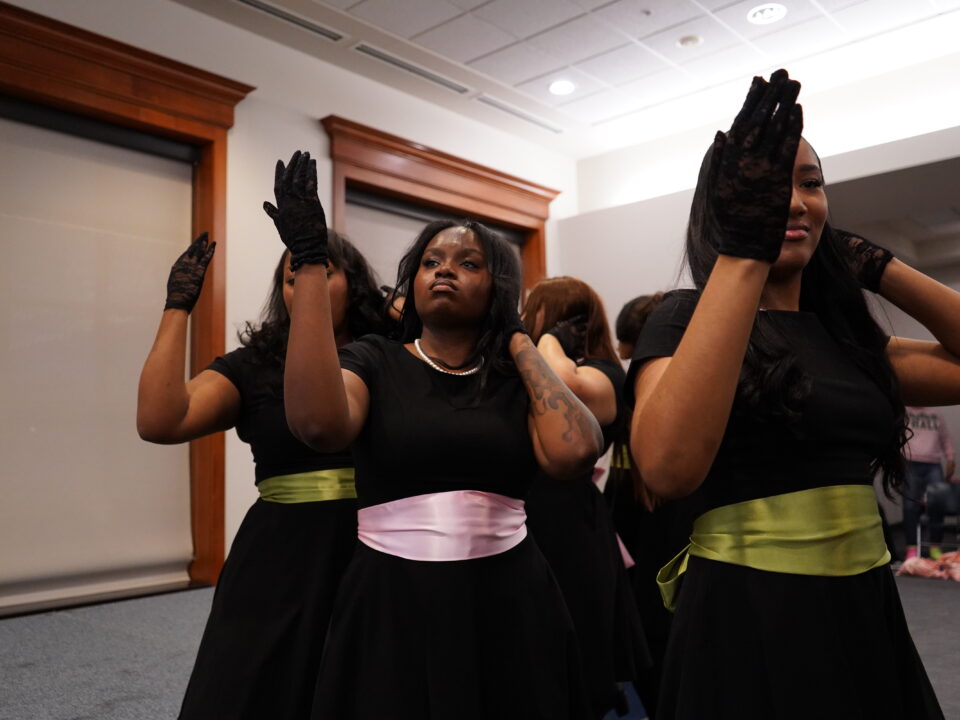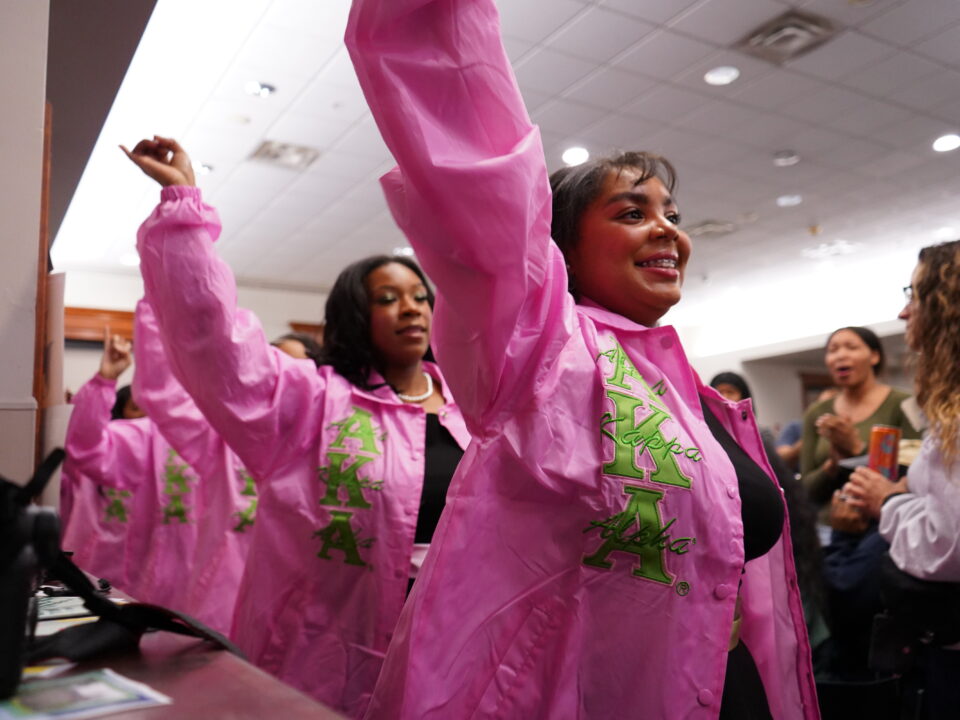The course of COVID-19: January 2020 to now
COVID-19 took the world by the storm overnight, completely changing the trajectory of everyone’s lives. We went from sitting next to one another in a packed movie theater, to standing six feet apart in a line, waiting to get a cotton swab inserted into our nose to see if we’re lucky enough to be COVID-19 negative.
What began as a mysterious pneumonia in December 2019 has become a 21st century pandemic, claiming 2.6 million lives worldwide.
Over the past year, the world was flipped upside down as countries raced to close down, quarantine, and move the lives of bustling cities and countries into Zoom rooms in hopes of containing the spread of COVID-19.
Here is a timeline highlighting some of the events that transpired from January 2020 to March 2021, which have completely changed the lives of millions of Americans.
January 2020
Jan. 19, 2020: The first case of COVID-19, then called SARS-CoV-2, was detected in Washington state, in a man who began to develop symptoms after returning from Wuhan, China on Jan. 15.
Jan. 30, 2020: The WHO declared a global health emergency after thousands of cases began to appear in China. The United States warned Americans against travelling to China.
Jan. 31, 2020: President Trump swiftly placed a ban barring foreign nationals from entering the U.S. if they had travelled to China within the last 14 days.
February 2020
Feb. 3, 2020: The U.S. declared a public health emergency.
Feb. 11, 2020: The WHO named the mysterious disease that had already taken over 360 lives “COVID-19.” COVID-19 is short for coronavirus disease 2019.
Feb. 29, 2020: The U.S. reported its first official COVID-19 death near Seattle, Wash.
March 2020
March 11, 2020: The WHO declared COVID-19 a pandemic.
March 13, 2020: President Trump declared COVID-19 to be a national emergency, while simultaneously declaring a travel ban on non-U.S. citizens coming from Europe.
March 26, 2020: 81,321 confirmed COVID-19 cases and 1,000 reported deaths in the United States, making the U.S. the most infected country, globally.
March 27, 2020: President Trump signed the CARES Act, extending unemployment benefits to Americans impacted by COVID-19 as well as a direct deposit of 1,200 dollars into the accounts of eligible Americans as a stimulus relief check.
April 2020
April 2, 2020: 10 million Americans lost their jobs due to the pandemic and 6.6 million people applied for unemployment benefits in order to sustain their livelihoods as the world seemingly grew more infected. More than one million people were infected worldwide in 171 countries with over 51,000 deaths.
April 11, 2020: The first round of 1,200 stimulus checks began being deposited into Americans’ accounts.
April 26, 2020: The death toll climbed up to 200,000 worldwide with 2.8 million individuals infected.
April 30, 2020: With the number of infected cases climbing each day, airlines began requiring facial coverings on flights.
By the end of April, 26.5 million Americans signed up for unemployment benefits.
May 2020
May 12, 2020: COVID-19 cases began to climb throughout May 2020 and Anthony Fauci, U.S. National Institute of Allergy and Infectious Diseases, declared the U.S. death toll of 80,000 was an underestimate and that hopes of a vaccine to help fight COVID-19 would be released within one to two years.
May 28, 2020: The U.S. death toll topped 100,000 people in the United States who have died from COVID-19.
June 2020
June 10, 2020: Social distancing was urged heavily in the beginning of the pandemic; however, states began to ease restrictions as they entered into new tiers on their paths to regain normalcy and reopen their economies. With eased restrictions, the U.S. saw its number of infected cases climb up to 2 million.
June 16, 2020: The U.S. Department of Health and Human Services (HHS) announced the COVID-19 vaccine, which was in the development stage, would be free to some, primarily elderly patients and vulnerable populations who would not be able to afford it.
June 26, 2020: States in the U.S. south began to see a staggering rise in cases because of eased reopening plans addressed by the White House Coronavirus Task Force. With these developments, Texas and Florida halted their reopening plans.
June 30, 2020: The news became grimmer when Fauci announced that COVID-19 cases could begin topping 100,000 new cases a day given that the U.S. was faced with around 40,000 cases a day around this time.
July 2020
July 6, 2020: Scientific developments began to emerge, citing that COVID-19 is an airborne disease, calling on the WHO to revise guidelines that stated COVID-19 was spread via small droplets transmitted through an infected individual when they cough, sneeze, or speak.
July 9, 2020: The WHO took these guidelines into consideration and announced it to the public.
July 7: The U.S. topped 3 million cases of infected individuals and simultaneously announced they would be withdrawing from the WHO, which would not take place until 2021.
July 13, 2020: With the spike in unemployment from February to July, five million Americans lost their health insurance.
July 14, 2020: Moderna Inc. began to show promising results and status as a potential vaccine candidate in their early trials of the COVID-19 vaccine.
July 21, 2020: The HHS and Department of Defense (DOD) signed a distribution deal with Pfizer and BioNTech to deliver 100 million doses of their vaccine by December 2020 to the U.S. if phase-three trials prove safe and effective.
July 27, 2020: Moderna entered their phase-three trial and received $427 million from the Trump administration to expand their trial to 30,000 U.S. participants.
August 2020
Aug. 1, 2020: As people began to turn down from their summer highs, the U.S. saw 1.9 million cases reported in the month of July 2020.
Aug. 3, 2020: With this steep number rising, President Trump declared in an interview with Axios that the U.S. death toll “is what it is.”
Aug. 4, 2020: The death toll rose to 150,000 Americans. Rural America began suffering when 49% of low income hospitals began to have a complete shortage of intensive care unit beds and had to begin transferring patients to wealthier hospitals to administer COVID-19 treatments.
Aug. 11, 2020: Moderna and the U.S. reached an agreement where the U.S. will pay $1.5 billion for 100 million doses of the Moderna vaccine.
Aug. 13, 2020: Presidential nominee Joe Biden urged state governors to require their citizens to wear masks when they leave their homes for three months and promised to instill a mask mandate if he wins the presidential office in November. The U.S. death toll is 165,000 and the mask mandate would protect 40,000 lives by November.
Aug. 16, 2020: The Center for Disease Control (CDC) began drafting a vaccine distribution plan. The global death toll hiked up to 800,000 dead from COVID-19.
September 2020
Sept. 3, 2020: As colleges began to reopen for the fall semester on campus after sending students home to work remotely in March, 51,000 COVID-19 cases were tied to American colleges, causing campuses such as University of Notre Dame and University of North Carolina at Chapel Hill to close down again.
Sept. 14, 2020: Pfizer-BioNTech entered phase-three of their vaccine trial on to 44,000 in order to host a more diverse audience with adolescents under 16, people living with HIV, Hepatitis B or Hepatitis C.
Sept. 16, 2020: The Trump Administration released their first vaccine distribution plan, declaring the vaccine would be free for all and would begin being distributed in January 2021, however they indicated no clear plan on the hierarchy of who would receive the vaccine first.
Sept. 21, 2020: Johnson & Johnson announced they would be entering phase-three of their vaccine trial which differs from Moderna and Pfizer-BioNTech with only one dose being needed rather than two doses.
Sept. 22, 2020: The U.S. death toll reached 200,000 Americans.
Sept. 28, 2020: The global death toll hit one million.
October 2020
Oct. 2, 2020: After the first presidential debate against Democratic candidate Biden, President Trump and wife Melania Trump announced they contracted COVID-19.
Oct. 5, 2020: President Trump was admitted to the Walter Reed National Military Center and returned to the White House.
Oct. 11, 2020: One million cases were reported in three days globally, the highest number of cases reported in a short time span.
Oct. 15, 2020: The U.S. reported 60,000 cases in a single day, a number that had not been reached since August.
November 2020
Nov. 4, 2020: The U.S. reported 100,000 COVID-19 cases in one day. The U.S. remains to be the most infected country.
Nov. 5, 2020: Colleges made up 250,000 of U.S. COVID-19 cases.
Nov. 7, 2020: After a week-long election, Biden was announced as president-elect, announcing plans to halt the spread of COVID-19.
Nov. 8, 2020: 10 million cases of COVID-19 were reported in the U.S.
Nov. 9, 2020: President-elect Biden announced who would be on his Transition COVID-19 Advisory Board.
Nov. 16, 2020: Moderna announced their vaccine had a 94.5% efficacy rate in protecting against COVID-19.
Nov. 18, 2020: Pfizer-BioNTech announced their vaccine trials showed 95% efficacy against COVID-19 and they would be seeking FDA approval in order to begin distributing the vaccine before the end of 2020. The U.S. death toll reached 250,000 Americans.
Nov. 21, 2020: With cases and deaths still rising, the Food and Department of Agriculture (FDA) granted emergency approval to the Regeneron treatment used on President Trump during his stay at Walter Reed National Military Center to be used on COVID-19 patients.
December 2020
Dec. 3, 2020: President-elect Biden asked Americans to wear masks for 100 days in an effort to prompt more Americans to keep wearing masks in order to diminish the number of COVID-19 cases.
Throughout the month, the FDA met to deliberate on the approval of the Moderna and Pfizer-BioNTech vaccines.
Dec. 11, 2020: The FDA granted an emergency use authorization for the Pfizer-BioNTech vaccine to begin shipment and distribution. Pfizer-BioNTech requires two doses given 21 days apart.
Dec. 14, 2020: The death toll in the U.S. reached 300,000 Americans.
Dec. 18, 2020: Moderna was granted an emergency use authorization and allowed to begin shipment for distribution requiring two doses given 28 days apart.
Dec. 21, 2020: In the United Kingdom a new COVID-19 variant was detected appearing to be more contagious than the current strain plaguing the globe.
Dec. 23, 2020: The U.S. bought 100 million more doses of the Pfizer-BioNTech doses.
Dec. 29, 2020: In Colorado, a man in his 20’s was infected with the new strain of COVID-19 from the United Kingdom even though he had not travelled there prior.
After months of fighting on capitol hill, the second round of stimulus checks of $600 began to be deposited into Americans’ bank accounts.
Dec. 31, 2020: 2.8 million people received their initial COVID-19 dose, falling short of the promise of only distributing 14 of the 20 million doses allocated for the first rounds.
January 2021
Jan. 1, 2021: To start off the new year, the U.S. reported 20 million COVID-19 cases.
Jan. 3, 2021: California reached its maximum running out of ICU beds as cases rose day by day. The state reported 45,350 new cases.
Jan. 4, 2021: 4.2 million Americans had been vaccinated. On this same day, John Hopkins University revealed in their data that the U.S. averages 2,637 COVID-19 deaths a day which results in one American dying every 33 seconds.
Jan. 11, 2021: Vaccine rollout remained slow with only 6.7 million people vaccinated with 22 millions doses have been distributed to hospitals and pharmacies nationwide.
Jan. 15, 2021: 12 million vaccines were administered.
Jan. 18, 2021: Dr. Rochelle Walensky, incoming CDC director, stated the U.S. death toll will hit 500,000 by mid-February.
Jan. 22, 2021: Fauci announced that the U.S. is capable of having 85% of Americans vaccinated by the end of summer.
Jan. 28, 2021: A White House COVID-19 Response Team senior advisor stated “it will be months” before every American who wants to be vaccinated can get one.
Jan. 29, 2021: In South Carolina, two cases of COVID-19 were confirmed to be the new strain found in South Africa.
February 2021
Feb. 4, 2021: The FDA began preparing reviewing potential COVID-19 booster shoots to enhance protection from COVID-19 variants if they become dominant enough to fight off the protection from the current vaccines.
Feb. 8, 2021: U.S. COVID-19 infection rate climbed to 27 million cases and death tolls nears half a million Americans, at 463,433.
Feb. 17, 2021: An average of 1.6 million Americans received a vaccine each day during the week of Feb. 8.
Feb. 22, 2021: The U.S. COVID-19 death toll reached its grimmest milestone of 500,000 Americans.
Feb. 27, 2021: The FDA approved the Johnson & Johnson vaccine for emergency authorization with 72% effectiveness that increases over time, only one vaccine is required per person compared to the two shots of Moderna or Pfizer-BioNTech.
March 2021
March 1, 2021: Four million doses of the Johnson & Johnson vaccine are being shipped across the U.S. for immediate distribution.
March 3, 2021: 80 million COVID-19 vaccines had been administered in the U.S.
March 6, 2021: The Senate approved President Biden’s COVID-19 bill, granting Americans a third stimulus check of $1,400.
March 7, 2021: The U.S. COVID-19 death toll stood at 524,000 Americans.



